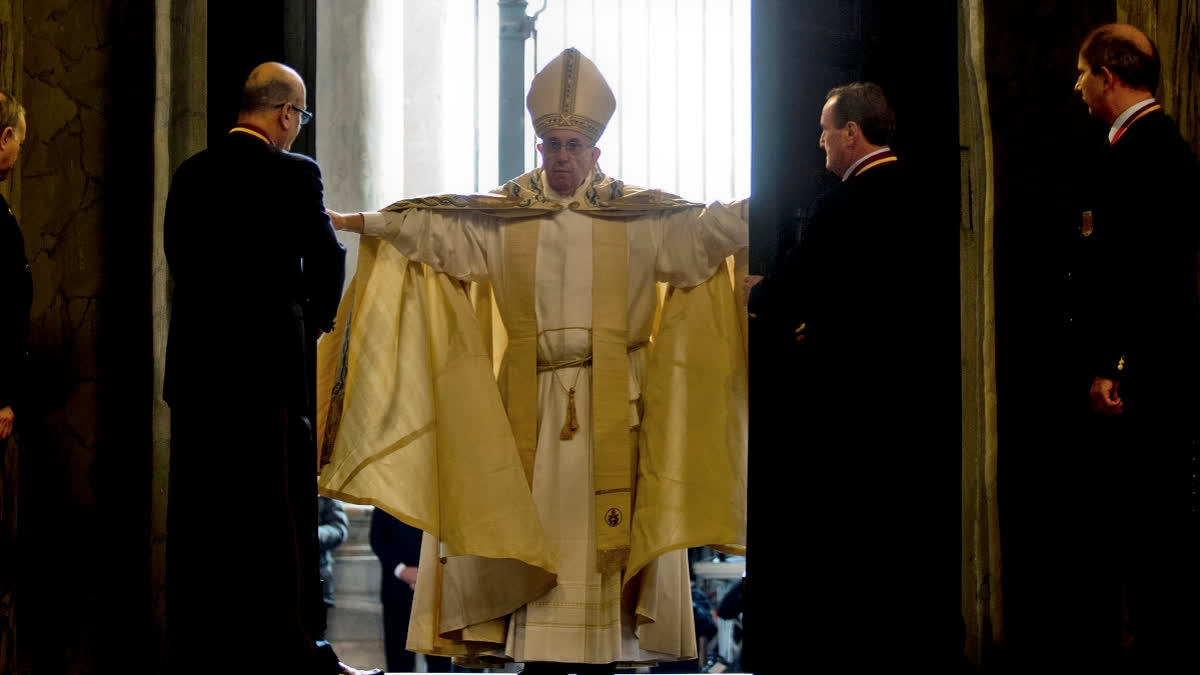Vatican city:Pope Francis on Tuesday formally inaugurated the 2025 Holy Year, reviving an ancient church tradition encouraging the faithful to make pilgrimages to Rome, amid new security fears following a Christmas market attack in Germany.
At the start of Christmas Eve Mass, Francis will push open the Holy Door on St. Peter’s Basilica, which will stay open throughout the year to allow the estimated 32 million pilgrims projected to visit Rome to pass through.
The first Holy Year was called in 1300 and in recent times they are generally celebrated every 25 to 50 years. Pilgrims who participate can obtain “indulgences” — the centuries-old feature of the Catholic Church related to the forgiveness of sins that roughly amounts to a “get out of Purgatory free” card.
The last regular Jubilee was in 2000 when St. John Paul II ushered in the church’s third millennium. Francis declared a special Jubilee in 2015-2016 dedicated to mercy and the next one planned is in 2033, to commemorate the anniversary of the crucifixion of Christ.
What are indulgences?
According to church teaching, Catholics who confess their sins are forgiven and therefore released from the eternal or spiritual punishment of damnation. An indulgence is designed to remove the “temporal” punishment of sin that may remain — the consequence of the wrongdoing that might disrupt the sinner’s relationships with others.
Martin Luther’s opposition to the church’s practice of selling indulgences inspired him to launch the Protestant Reformation in the 1500s. He was excommunicated, and the practice of buying and selling indulgences has been illegal since the 1562 Council of Trent. But the granting of them has continued and is an important element in Holy Year pilgrimages.
According to the norms issued for the 2025 Jubilee, Catholics can obtain an indulgence if they:
- Undertake a pious pilgrimage, participating in Masses and other sacraments, at any of the four papal basilicas in Rome or the Holy Land, or other sacred Jubilee sites “to manifest the great need for conversion and reconciliation.”
- Participate in works of charity, mercy or penance, such as visiting prisoners, sick people or elderly people or undertaking corporal works of mercy “to feed the hungry, give drink to the thirsty, clothe the naked, welcome the stranger, heal the sick, visit the imprisoned, and bury the dead.”
- Abstain, in a spirit of penance, for at least one day of the week from “futile distractions,” such as social media, or from “superfluous consumption," such as fasting; or donating the proportionate sum to the poor or to help migrants.
Why the focus on prisoners?
Francis has long made ministry to prisoners a hallmark of his priestly vocation, and a Holy Year dedicated to a message of hope is no exception.
The only other Holy Door that Francis will personally open this year is located at the chapel of Rome’s Rebibbia prison, to draw attention to the need to give prisoners in particular hope of a better future.
The final big event of the Holy Year before it closes on Jan. 6, 2026, is the Jubilee of Prisoners on Dec. 14, 2025.
